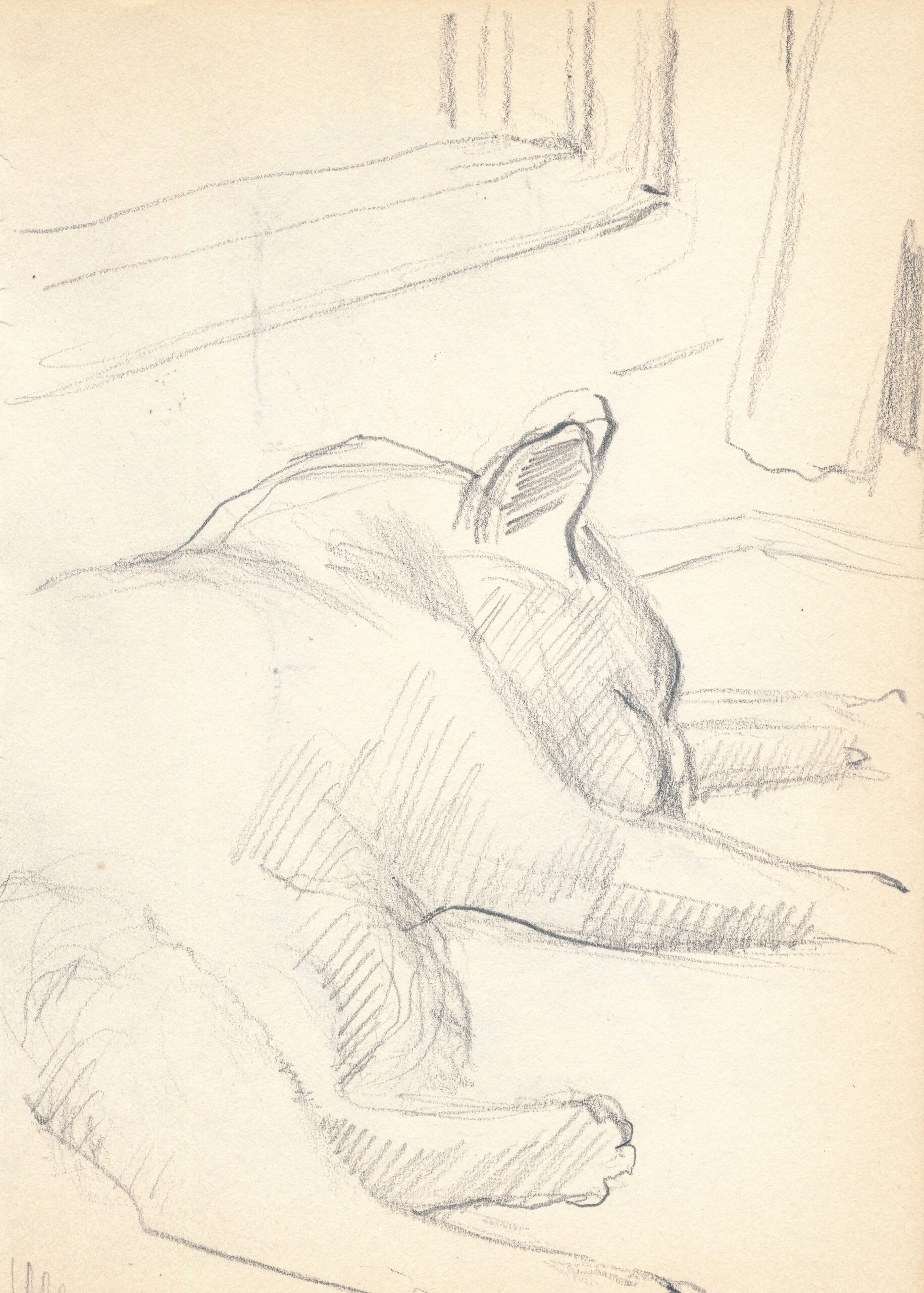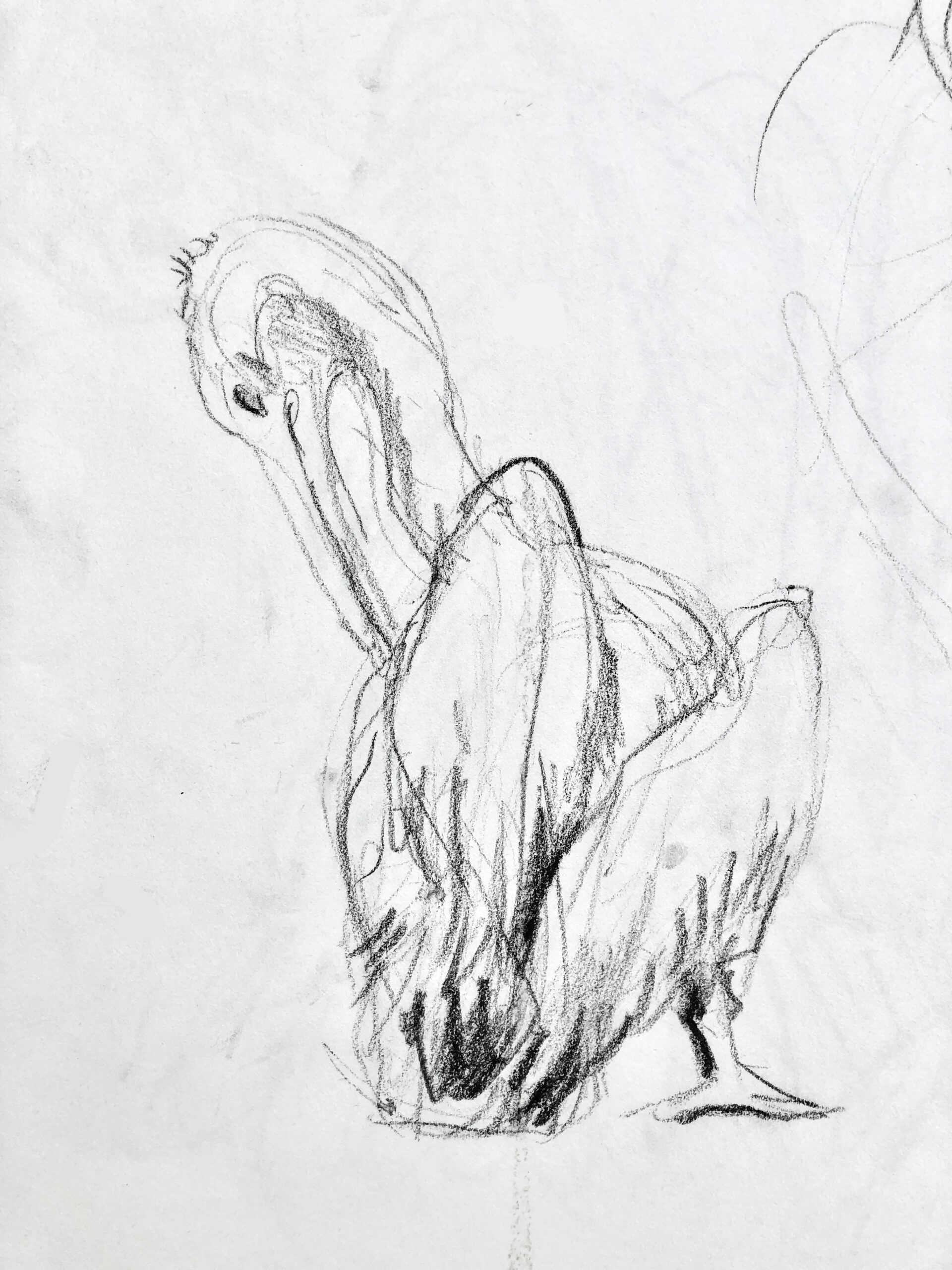CHAPTER 4 | DRAWING FROM REAL LIFE

In real life most of the time animals move. But why not start with a sleeping pet?
EXTRA 1: Draw a sleeping pet or find another animal that sits/stands/lies still. Use a sketchbook or attach your paper to a hard surface with a clip, so you don’t need a table wherever you are. Keep looking back and forth from your subject to your drawing and back.

EXTRA 2: Try to draw an animal that’s moving slowly, maybe on a farm or in a Zoo. Try to follow the movement with your pencil and sometimes wait a while until a certain posture returns. You won’t have time for precise drawing!


Pelican in the zoo, cleaning it’s plumage, Siberian chalk (50 x 65 cm)
The more/faster animals (or people) move, the more flexible and sketchy you will have to draw. The result may look scratchy or messy but it is a great drawing exercise. As an example, here’s a sketch of plowing horses by the Dutch artist Georg Hendrik Breitner (1857-1923).

The 19th-century Haitian artist John James Audubon made studies of birds in their natural habitat, in the forest, on the prairie and on river boat trips. He was also a forest ranger and even shot animals to stuff and study them, such as this delicately painted pelican. Yet Audubon was strongly against hunting for the thrill! Because of his painted catalogue of birds he can be seen as one of the founders of nature conservation. Some of the birds he painted are now extinct. Nowadays you can of course find stuffed animals such as the pelican he painted in natural history museums (Rotterdam, Leiden).
